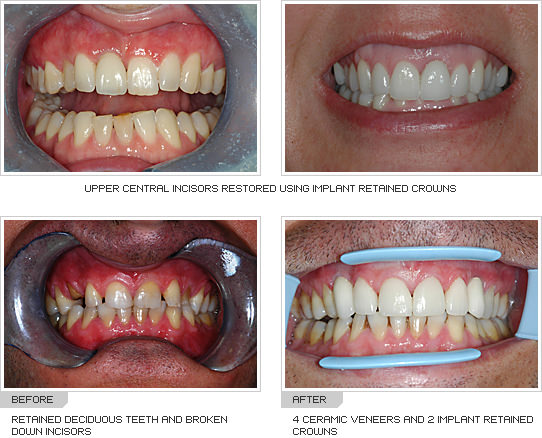Implant retained crowns represent the latest development in restorative dentistry and are, perhaps, the gold standard way of replacing a missing tooth.
At the front of the smile implant retained crowns can provide stunning aesthetic results where teeth have been lost through trauma or disease. They have replaced bridges as the treatment of choice for tooth replacement as, unlike bridges, implants do not require any adjustment to adjacent teeth and do not rely on these teeth for their success.
Typically implant work is divided into two stages.
Stage 1
This is the surgical placement stage which can take place at the time of the extraction of the tooth or can be delayed by 6-12 weeks if the area needs to heal. The implant is placed in to the socket and left to fuse (integrate) with the bone. The integration stage can take up to 3 months.
If the tooth was very infected or if a lot of bone has been lost around it, it may be necessary to replace bone or augment the implant site using further surgical techniques that will add to the time and costs involved.
Stage 2
The restorative stage. Once the implant is fully integrated it can be uncovered and restored with a crown that is screwed or cemented in place. This stage takes a minimum of two visits and can take up to four.

Advantages
Excellent long term stability
Stunning aesthetic
A fixed replacement option (unlike a denture)
Looks a feels like a real tooth
Disadvantages
Multiple visits over an extended time
High cost due to visits, laboratory fees and extra training
Replacement costs high if porcelain chips
Download a PDF of this page by clicking here
(Requires Adobe Acrobat Reader – download it for free by clicking here)
If you would like more information or to make an appointment at our Dental Practice in Hawkhurst, Kent please contact our Reception Team on 01580 752202 or info@stonerock.co.uk who will be more than happy to help with any matter.